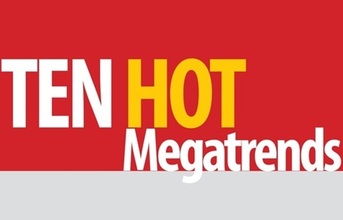
Trend 8
Service Driven Business Models
In particular companies from the developed markets respond to the challenge to extend or redeploy the initial core competency of a firm to increase their return with a shift in their business model.
These companies expand their role in the value chain and start to offer advanced services or complete solutions which are closely coupled to the manufacturer's products. They evolve their product-focused business model to a client-centric model. Therefore, they have to deploy competencies and solutions that address their clients' engineering and product lifecycle needs.
To deliver more tailored solutions and services, manufacturers aim for a closer ongoing collaboration with customers. To get closer to the customer, companies are taking control of activities in the outbound supply chain which are otherwise carried out directly by customers or third parties.
"Insights into your customer needs will be the most critical success factor in the service arena." - Markus Deutsch, Senior Manager, Consulting - Strategy & Operations
-----------
Trend 9
Sourcing Governance
Traditional compliance focuses on the internal corporate governance, but tangentially more and more of added-value takes place outside the company. Sourcing governance is the responsible management and controlling of the company's external value chain.
It is intended to achieve the leadership of the company's value network in order to minimise possible risks. A manufacturer's risk management has the task of safeguarding the competitive environment and guaranteeing the security of supply. It implies the identification and control of risks in terms of suppliers, commodity groups and regions within global markets.
The sourcing governance approach focuses on the company's entire external supply chain - suppliers and presuppliers are therefore a part of corporate responsibility. This approach provides a global control matrix for sustainable supply chain management.
"Sourcing governance ensures the alignment of purchasing activities within the company's strategy. The visibility of a multi-tier supply chain will be the cutting edge for the future." - Dr. Lars Immerthal Director, Consulting - Supply Chain Management & Procurement
-----------
Trend 10
Additive Manufacturing / 3D Printing
Additive manufacturing (3D printing) describes the technologies of making a three-dimensional solid object of virtually any shape from a digital model. This production method is achieved using an additive process, where successive layers of material (e.g. plastic, metal, ceramics) are laid down in different shapes.
Parts are built up from a large number of very thin two-dimensional cross sections (layers). The layer's particles are bound by heat or chemicals. 3D printing is considered distinct from traditional machining techniques, which primarily rely on the removal of material by methods such as cutting or drilling (subtractive processes).
This layered manufacturing process is moving from an expensive niche tool for rapid prototyping to rapid manufacturing for a wide range of industries (e.g. aerospace and defence, automotive, medical technology). Industrial and consumer 3D printing will become one of the next revolutions along the entire supply and value chain.
"Additive or 3D manufacturing is a new kind of production. This technology can significantly change the way we produce. Companies should foster this challenge." - Wolfgang F. Grassl, Partner, Consulting - Supply Chain Management & Procurement
END


























